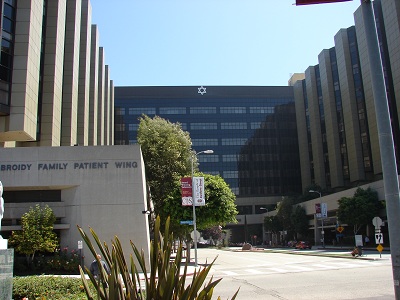BEVERLY HILLS—The Cedars-Sinai Medical Center received a $2.5 million grant from the federal government to fund gene therapy for Lou Gehrig’s disease on April 1.
The grant from the Department of Defense will go towards conducting animal studies that will provide the basis for clinical trials to test a new gene therapy designed to treat Lou Gehrig’s disease, according to a news release from the hospital. More than $7.5 million is invested by the DOD on an annual basis, as a significant number of military veterans have fallen victim to the disease.
Lou Gehrig’s, also known as amyotropic lateral scierosis or ALS, targets nerve cells that control muscles, called motor neurons, in the brain, spinal cord and brainstem. As the disease attacks these neurons, they die off, causing the body to lose its ability to initiate and control muscle groups. This leads to paralysis and death about five years after the initial diagnosis.
Taking place at the hospital’s Regenerative Medical Institute, the study will pour its focus onto a protein called GDNF, which is able to promote the survival of neurons, and its effect on rats bred to model forms of Lou Gehrig’s. The transportation of GDNF to the spinal cord to protect neurons has failed as the protein “does not readily penetrate into the spinal cord.” The Regenerative Medical Institute has shown that stem cells designed to produce GDNF placed in the spinal cord have increased motor neuron survival, but they were still unable to protect critical sites like the neuromuscular junction, where muscle fibers join with nerve fibers to create movement.
The team, led by Dr. Clive Svendsen and Dr. Genevieve Gowing, hopes to target muscle groups with GDNF-protected nerve cells, which are created by stem cells derived from human bone marrow, packed into viral vectors like AAV5. These vectors, or viruses stripped of their harmful qualities and used as delivery systems, will take the GDNF cells into the leg and diaphragm muscle tissue of lab-bred rats.
“Muscle is much more readily accessible for treatment and biopsy than brain tissue or the spinal cord, which makes this strategy very promising,” said Dr. Svendsen in the release. “Our previous findings provide strong evidence that the viral vectors can transfer the GDNF protein into muscle, and we have shown that GDNF delivered to muscle may slow disease progression.”
The hope is that the research will lead to the filing of an investigative “New Drug” filing with the Food and Drug Administration. If that happens, the hospital’s ALS Program will proceed with clinical trials.
“We appreciate the Department of Defense’s interest and funding, which will make it possible for us to further this exciting research,” Dr. Svendsen said.






